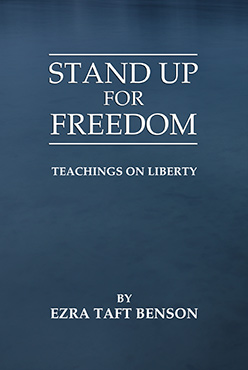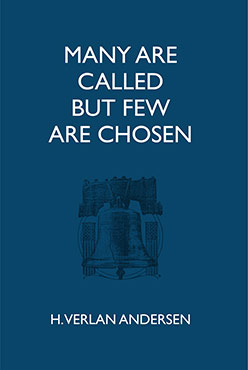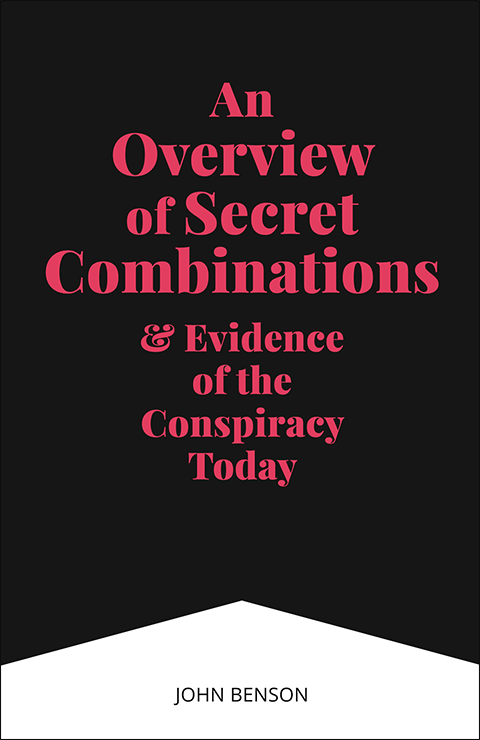The Prophetic History of Christopher Columbus
W. Cleon Skousen. The Prophetic History of Christopher Columbus. Notes for remarks given to the Parley’s First Ward High Priests on October 14, 1990.
Introduction: In the Church News of October 10, 1970, we read the following:
“Columbus sailed under the Spanish flag. He came from Italy. Research hints that he was of Jewish descent. His voyage was of worldwide importance, and opened a new day for all mankind.”
I. Columbus in prophecy.
A. Around 600 B.C., a young man believed to have been around 16 or 17 years old, saw a vision of Columbus discovering America. Here is what he said:
“And I looked and beheld a man among the Gentiles, who was separated from the seed of my brethren by the many waters; and I beheld the Spirit of God, that it came down and wrought upon the man; and he went forth upon the many waters, even unto the seed of my brethren, who were in the promised land.” 1
B. He also saw other Europeans coming to America. He wrote:
“And it came to pass that I beheld the Spirit of God, that it wrought upon other Gentiles; and they went forth out of captivity, upon the many waters.” 2
C. Isaiah had seen this same vision and described the inhabitants of this land among the islands of the sea as being inhabited by a people “scattered and peeled,” who had been “terrible from their beginning.” 3 The young prophet Nephi described how the Europeans would conquer and devastate these American natives:
“I beheld many multitudes of the Gentiles upon the land of promise; and I beheld the wrath of God, that it was upon the seed of my brethren; and they were scattered before the Gentiles and were smitten.” 4
D. Nevertheless, the Lord revealed that one group of Europeans would be especially blessed in America and become the most powerful nation on the face of the earth.
“And I beheld the Spirit of the Lord, that it was upon the Gentiles, and they did prosper and obtain the land for their inheritance; and I beheld that they were white, and exceedingly fair and beautiful, like unto my people before they were slain.
“And it came to pass that I, Nephi, beheld that the Gentiles who had gone forth out of captivity did humble themselves before the Lord; and the power of the Lord was with them…. and … lifted up by the power of God above all other nations.” 5
II. The life of Columbus in its prophetic setting.
A. At a time when Jews were being severely persecuted, many of them became nominal Christians to escape exile or death. Historians are finding considerable evidence that this had happened to the family of Columbus three or four generations earlier.
B. Columbus was born in Genoa, Italy, between September and October, 1451. He learned the trade of his parents as weavers but his brother, Bartholomew became a map maker and by 14 Columbus was imbued with a desire for adventure and had taken to the sea. Although he had little formal education he had a remarkable knowledge of the Bible from a Jewish perspective. He was fluent in Italian, Portuguese, and Spanish and in his later years wrote exclusively in Spanish. He was described as:
“Above average height, stocky build, blonde, reddish hair (which turned completely white at age 30), blue eyes, aquiline nose, ruddy complexion, and cupid mouth.
“He dressed modestly and was of a serious temperament, being extremely devoted to the Christian religion.”
C. At 24 he sailed with the merchant fleet to England, but was attacked en route and badly wounded. He managed to jump overboard just before his ship sank. Hundreds drowned but Columbus clung to a sweep or large oar and paddled six miles to shore. After getting well, he signed on as a sailor to Ireland and Iceland. One of his later trips took him to the gold coast of Africa. He was an experienced seaman and navigator long before he set out on his historic adventure in 1492.
D. Ever since the early 1300s, when Marco Polo made a successful trip to China with his father and Uncle, Europeans had been anxious to develop trade routes to the Far East so they could make fortunes importing spices, tea, rugs, silk, jewels, and other luxuries. However, because the overland routes proved to be extremely hazardous due to robbers and hostile tribes, both England and Portugal tried to get to China by going west across the Atlantic. This was several years before Columbus tried it. The ships of the Portuguese were turned back by strong winds which blew east, and the English ships encountered icebergs. Navigators from both countries were further troubled by the fact that their geographers did not know for certain how far west a boat would have to travel to reach China. All of the scholars knew the earth was round but they did not know how big around. The idea that the people of that period thought the earth was flat is a pure modern myth.
E. The ancient Greeks had devised an ingenious method of determining that the earth was around 27,750 miles in circumference which was, in fact, fairly close. However, Columbus favored the calculations of a geographer name Paulo Toscanelli. He estimated the earth to be 12,000 miles in circumference and assured Columbus that 3,000 miles west of Portugal he would find land. This fortunate mistake helped lead to the discovery of America.
III. Columbus says he made the trip under the guidance of the Holy Ghost. As he later said to the king and queen of Spain: “I came to your majesty as the emissary of the Holy Ghost.” 6
A. From the writings of Christopher Columbus we find the following significant statement:
“It was the Lord who put into my mind (I could feel his hand upon me) the fact that it would be possible to sail from here to the Indies. All who heard of my project rejected it with laughter, ridiculing me. There is no question that the inspiration was from the Holy Spirit because He comforted me…. For the execution of the journey to the Indies, I did not make use of intelligence, mathematics or maps. It is simply the fulfillment of what Isaiah had prophesied.” 7
B. Favorite passages of Isaiah which he quoted included:
“Woe to the land shadowing with wings, which is beyond the rivers of Ethiopia: that sendeth ambassadors by the sea, even in vessels of bulrushes upon the waters, saying, Go, ye swift messengers, to a nation scattered and peeled, to a people terrible from their beginning hitherto; a nation meted out and trodden down, whose land the rivers have spoiled!” 8
“Listen, O isles, unto me; and hearken, ye people, from far; The Lord hath called me from the womb; from the bowels of my mother hath he made mention of my name….
“And now, saith the Lord that formed me from the womb to be his servant, to bring Jacob again to him, Though Israel be not gathered, yet shall I be glorious in the eyes of the Lord, and my God shall be my strength.
“And he said, It is a light thing that thou shouldest be my servant to raise up the tribes of Jacob, and to restore the preserved of Israel: I will also give thee for a light to the Gentiles, that thou mayest be my salvation unto the end of the earth.” 9
C. One of the foremost authorities on Columbus is Samuel Eliot Morison of Harvard. After studying the extremely spiritual commitments of Columbus, he wrote:
“Men may doubt this, but there can be no doubt that the faith of Columbus was genuine and sincere, and that his frequent communion with forces unseen was a vital element in his achievements. It gave him confidence in his destiny, assurance that his performance would be equal to the promise…. This conviction that god destined him to be an instrument for spreading the faith was far more potent than the desire to win glory, wealth, and worldly honors, to which he was certainly far from indifferent.” 10
IV. Columbus records a revelation which he received toward the end of his fourth voyage:
A. On his first voyage, Columbus departed August 3, 1492, and reached the first land on October 12. He took no priests with him, only a Christian Jew who spoke Hebrew. He hoped among the people of China and India he would find the Ten Tribes and thought they would still speak Hebrew. It was on this voyage that Columbus saw a tribe of around 500 white Indians.
B. On his second voyage (September 25, 1493), Columbus was given 17 ships and 1,000 men to colonize Hispaniola (Haiti and Santo Domingo of today). After Columbus returned to Spain, the conquistadors wiped out the tribe of white Indians and many of the others natives.
C. His third voyage was 1498. This time he sailed further south and discovered the continent of South America at a point which is now called Venezuela.
D. His fourth and last voyage left Spain May 9, 1502. He sailed for the region of what is now Panama because he had heard that if he could find a strait through this narrow neck of land he could reach the Pacific and proceed to China. This was his most hazardous and disappointing trip of all. It was on this trip that he recorded a revelation by an angel with a “most merciful voice.” This is recorded on the next page along with a sermon by Orson Hyde identifying the heavenly messenger who guarded Columbus as the angel Moroni.





